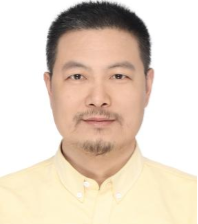
Prof. Fei You
Nanjing Tech University, China
Title: Bio-based materials and sensors and their possible applications in wind turbine fire prevention and control
Abstract:
As a renewable, sustainable and green energy source, wind power has been developed and applied prosperously in recent years. However, wind turbines are also facing sever fire situations, risks and challenges since considerable fire accidents occur at times. How to conquer these problems from a viewpoint of bio-based materials and sensors are a novel, big and interesting question. In this presentation, specific fire situations, hazards, risks, accidents and challenges for wind turbines are first illustrated and summarized. The importance and significance of bio-based materials and sensors as innovative solutions are introduced. Second, bio-based materials are overviewed. Definition, characteristics, categories, varieties and advantages of such materials are displayed. Especially, natural bio-polymers (e.g., cellulose, chitosan, starch), bio-plastics/resins (e.g., PLA, PHA), bio-composites (e.g., wood-plastic composites, natural fiber-reinforced composites) and functionally modified bio-materials (e.g., coatings, films and membranes) are addressed. Third, bio-based sensors are overviewed. Definition, principles, types, scales and advantages of such sensors are displayed. Especially, enzymatic sensors (using enzymes as recognition elements), biosensors (utilizing biological elements like proteins, cells, tissues, or biomolecules), microbial- and nanomaterial- based sensors, micro/nano-scale sensors derived from natural materials or inspired by biological structures, and smart bio-material sensors, are addressed. Fourthly, fire-related effects (fire prevention, fire warning, fire detection, fire monitoring, flame retardancy, thermal insulation and heat dissipation and fire extinguishing) of bio-based materials and sensors are discussed and analyzed. How bio-based materials and sensors can work together is further explored, for example, materials that enhance sensor performance (e.g., biocompatible substrates for sensor deposition), sensors embedded in bio-based materials for real-time fire monitoring, smart materials that respond to fire conditions (e.g., self-extinguishing or heat-dissipating properties), combining bio-based sensors with traditional ones. Fifthly, specific components and systems where bio-based materials and sensors can be applied are explored and analyzed. Nacelle and generator compartment, blade and hub assemblies, tower and foundation structures, and electrical and control systems of wind turbines are included. Sixthly, current academic researches, design concepts, technological developments, industry initiatives, case studies, and successful implementations are searched and summarized. Emerging trends and future directions are proposed. Seventhly, the section of challenges and opportunities comes. Key challenges in the developments and applications of bio-based materials and sensors, opportunities for innovations and collaborations, potential impacts on the wind energy sectors and beyond are predicted and analyzed. Finally, for the conclusion and concluding remark section, there will be summary of the main points discussed, emphases on the potentials of bio-based materials and sensors in wind turbine fire prevention and control, and calling for further researches, developments, and collaborations.
Biography:
Dr., Prof. Fei You got PhD in Engineering Discipline of Safety Technology and Engineering in 2008 from State Key Laboratory of Fire Science at University of Science and Technology of China. He was a visiting scholar of University of Michigan at Ann Arbor, College of Engineering, Department of Materials Science and Engineering. His interdisciplinary research interests include: Evolution properties and mechanisms of special fires and related key protection technologies in traditional and sustainable energies like smart grid, wind/coal/WEEE power generations; Preparations, characterizations and applications of multi-functional inorganic-organic hybrid and composite materials. He has been recognized for his contributions with over 10 scientific awards including the Second Prize of Innovation and Entrepreneurship Award (ranked 1/6) by China Invention Association, the Individual Innovation Award of China Industry-University-Research Cooperation, and selection as a High-level Talent under Jiangsu Province's Six Talent Peaks Program. Currently serving as Vice President of Beijing New Materials Technology Association and holding 10+ professional roles, he has published 130+ SCI papers in CAS Q1/Q2 journals, authored/co-authored 10 academic books, and led 70+ national/vertical projects and Fortune 500 enterprise-level collaborations. With 20+ invention patents granted/received in China, the U.S., and Belgium, he has provided technical consulting to 70+ high-tech institutions.